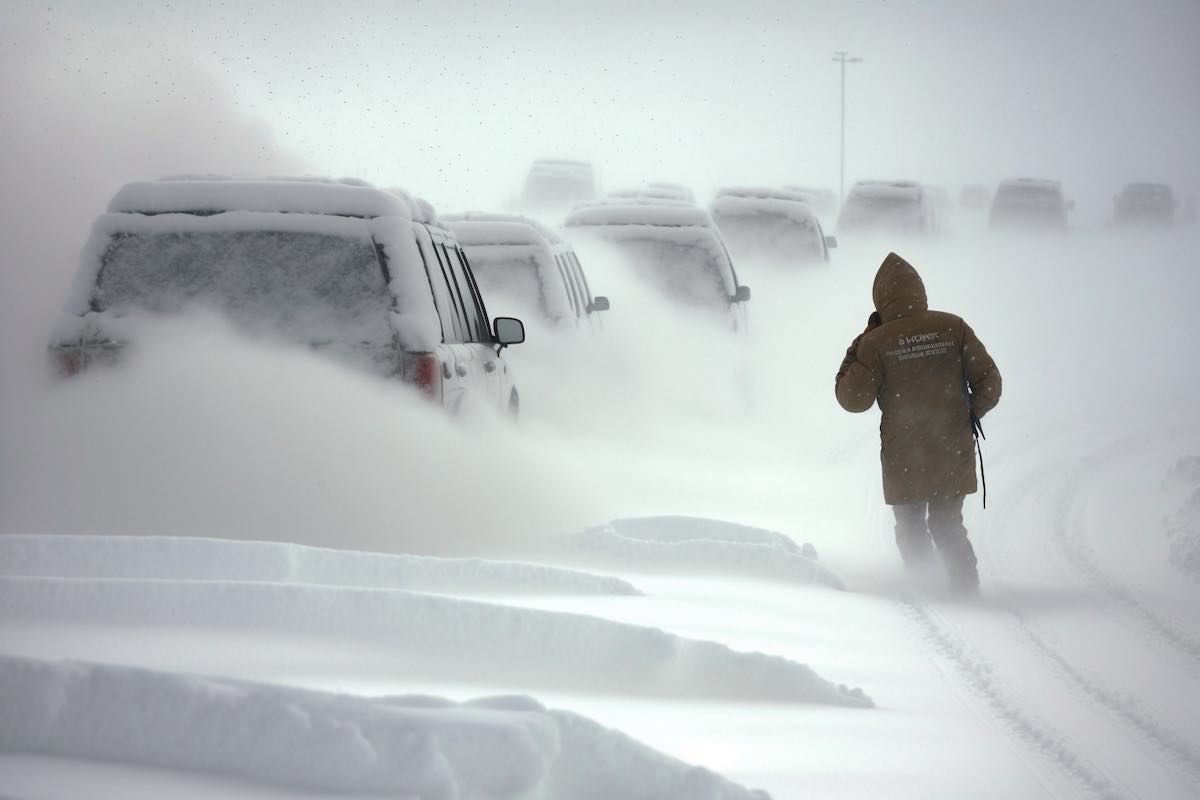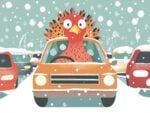Getting behind the wheel in below-freezing conditions probably isn’t your idea of fun. Even the most experienced motorists slide around on icy roads as if they just graduated from driving school. But you can have a better road trip this winter without losing your cool, say experts.
It’s going to be a rough winter, with El Nino promising to kick up even more intense weather than we’re used to.
Driving advice for winter: be prepared for changing conditions
“Road surfaces can change quickly between dry, snow-packed, and icy — all of which require a different approach to steering and stopping,” says Leslie Kasperowicz, a Minneapolis driver who edits a car insurance website. The trick, say pros like Kasperowicz, is to stay ahead of the weather, pack the right gear and make sure you know how to drive in winter conditions.
By the way, there’s a reason we skid around on the roads during a snowstorm, says Dale Trone. He’s a retired IT specialist who lives in Silverthorne, Colo., and spends about 70 days a year driving in snow. In particular, motorists who believe their four-wheel-drive SUVs will get them through anything. But four-wheel drive doesn’t allow you to stop or turn any better than two-wheel drive
“In almost every snowstorm, I see a four-wheel-drive in a snowbank,” he says.
Mobile apps that can help prepare you for driving in the winter
So how do you stay ahead of the weather? Downloading the right smartphone apps can help. They include:
Offline Survival Manual
This app has helpful information on how to make a fire, build a shelter, find food other information you might need in case of an emergency. “This handy app provides tips and helpful advice if you find yourself in a dangerous situation with your vehicle,” says Grant van der Harst, managing director at Anglo Liners, a road marking company. True to its name, once you download it you don’t need a cellular connection to access the information.
Waze
Waze is a navigation app that gives you turn-by-turn directions, but also user-contributed travel times and route details. Joe Gast, CEO at Truck Driver Institute, a driving school, recommends the app to his drivers. “Waze allows you to leverage traffic insights from other drivers so you can stay on safe and clear roads,” he says. It’s particularly useful during the winter because road conditions can be volatile.
Weather Underground
This app offers “hyper-local” weather data. During the winter, it highlights safer routes, in terms of weather. “Weather Underground issues ice alerts and warnings for other problematic conditions that can affect your driving during the cold winter months,” says Jared Kamrowski, who founded the Thrifty Traveler, a travel site.
There are also state Department of Transportation apps such as Pennsylvania’s 511PA Mobile App that can help. It broadcasts road conditions and lets you monitor the state’s plow trucks. If you’re driving in a blizzard, that can mean the difference between getting there and spending a night stuck in a snowbank.
Packing the car for your trip
If you’re driving in winter conditions, what should you pack in the car? For a list, I turned to Jess Larsen, who grew up snowboarding in northern Alberta. He’s driven in whiteout conditions many times, and as a vice president for an ad agency in Provo, Utah, he still gets a chance to practice his winter driving skills on the way to Utah’s ski resorts.
Here’s what he carries:
- Extra shoes or boots for pushing yourself or others out of a snowbank. If you wear nice shoes for work, Larsen says, “you’ll freeze within ten steps in the snow.”
- A little fold-up shovel so you can dig yourself or others out of the snow. Make sure it is metal in case you have to chip ice away from under a tire. “In the cold weather, everyone snaps the inexpensive plastic one they got a deal on and then starts feeling overwhelmed about what they’re going to do now,” says Larsen.
- At least a small blanket, water bottle, and some snacks. Take even more if you have kids, because they’ll get anxious in the cold — and hungry.
- If you’re planning to do a lot of winter driving, buy a box of cat litter. It’s a cheap way to give your tires a little traction snow or ice.
Don’t leave home without a roadside assistance plan
One final item you positively can’t leave home without: a roadside assistance plan.
“Shell out the cash to AAA (for a road side assistance program) or something like that,” says Larsen. “Then make sure everybody in your family programs the number into their phone.”
All of which brings us to the best strategies for winter driving. Assuming you’ve downloaded the right apps and packed the car with everything you need — what now? (Related: Adventures in Colorado’s snow country.)
Practice your winter driving. Larsen recommends finding an empty parking lot after a snowstorm. “Try getting yourself into a spin and seeing how fast you can recover,” he says. Also, practice turning at various speeds and stopping. Get a feel for how your car responds in snow.
“As far as driving itself, nothing can compete with meaningful repetitions,” he adds.
Slow down
And finally, slow down, say experts. Kamrowski, who grew up in Fargo, N.D., says he’s seen too many motorists passing him on the highways when the roads ice up. “Then you drive a few miles down the road and see them in the ditch,” he says.
How slow should you go? In snow, you should drive at half the speed you would on a clear road.
But the best advice for driving in whiteout conditions is: Don’t. If you can avoid taking the car out while it’s snowing, you’ll save yourself a lot of trouble. Yeah, you might miss the first couple of ski runs on a powder day — but at least you’ll be alive.




